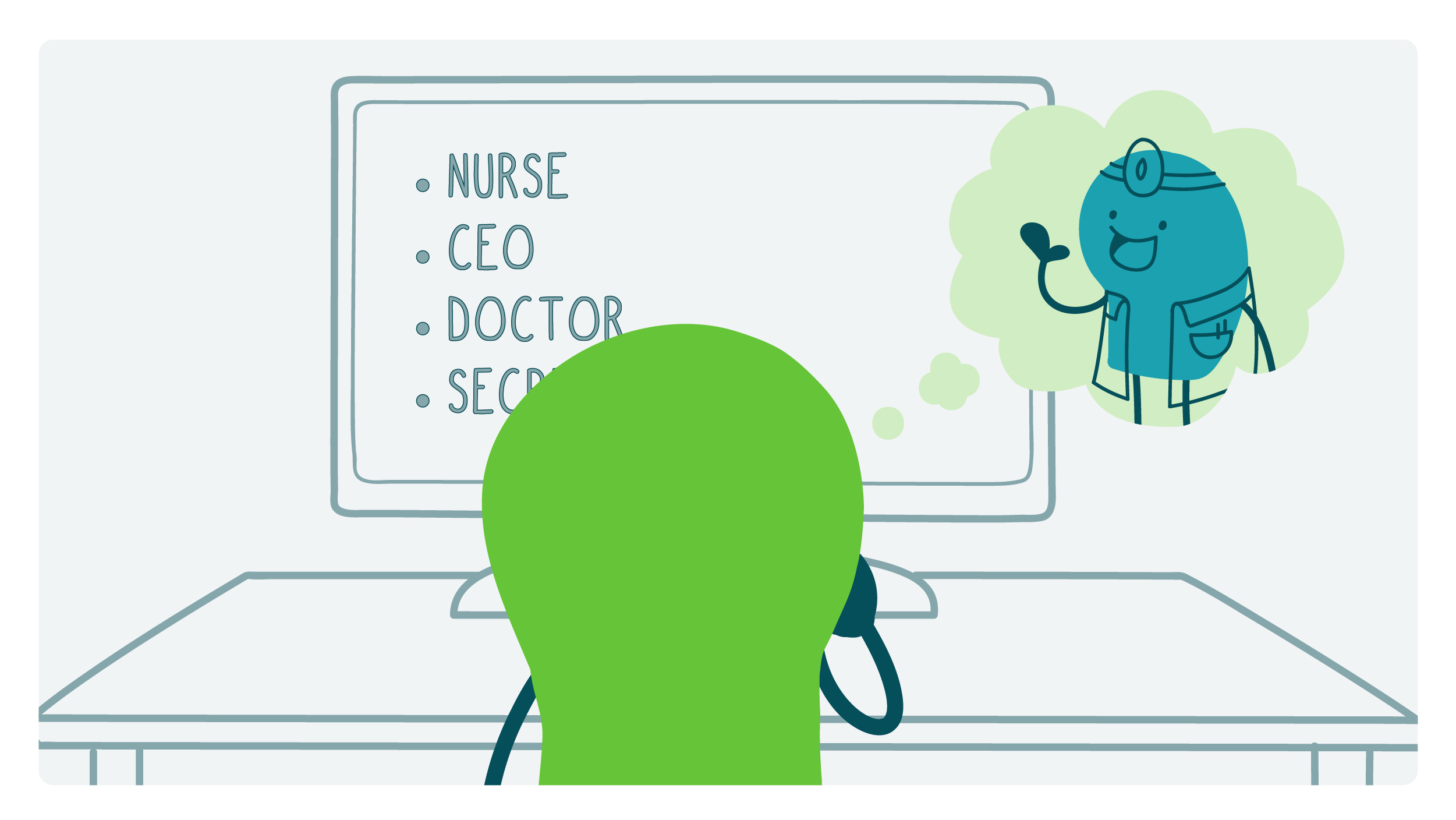
Lately, we’ve been drilling down into nuanced audience-related topics (see recent-ish thoughts on audience segmentation and intersectionality) and it has us returning again and again to an important truth: No one knows the lived experiences of your audience better than… the people in your audience! As health communicators, it’s our job to create opportunities to listen to their beliefs and experiences — and use that information to craft tailored health messages that meet people where they are.
Today, we’re going to talk about another piece of the puzzle that’s a bit trickier to get at: implicit (or unconscious) bias. In this helpful feature, the American Academy of Family Physicians defines implicit bias as “the unconscious collection of stereotypes and attitudes that we develop toward certain groups of people.”
Essentially, our brains assemble what we’ve heard/read/somehow absorbed about certain groups and form below-the-surface preferences or dislikes in response to the stereotypical (often inaccurate and potentially damaging) info they’ve collected. This happens to everyone — it’s a byproduct of the fact that our conscious minds can’t process all the information they get. Instead, our brains take shortcuts and establish these super sneaky biases that we really may have zero awareness of. (The awareness piece is what differentiates implicit bias from other forms of bias, like discrimination, racism, or sexism.)
Let’s do a simple exercise. The idea is to read the items in the following list one at a time and for each item, let your brain form a quick picture. Try not to overthink it or challenge your instincts:
- Nurse
- CEO
- Doctor
- Secretary
Now pause to reflect. Is it possible that your implicitly biased brain — despite how you consciously feel about things like feminism, employment equity, and the like — presented you with images of men for CEO and doctor and images of women for nurse or secretary? If so, that’s implicit bias creeping in.
And while it’s normal to carry around implicit biases, we have to be careful because implicit biases tend to lead to unconscious behaviors, and those behaviors can be harmful. Plus, our role as health communicators means we need to take extra care — after all, we’re often writing things for specific groups of people about very sensitive topics. The last thing we want is for our implicit biases to sneak in there and help reinforce harmful narratives and contribute to inequities. As health communicators, we have to be aware of these realities in our society and hold ourselves accountable.
That sets the stage for a nice example of how we might encounter — and work to intentionally disrupt — our own biases in health comm. When we choose stock photography for our health materials, we often show interactions between patients and health care providers. So if we know that we bring implicit biases to the table in terms of gender and professions (see above), we can actively work against that by, say, choosing a photo of a male nurse and a female doctor treating a patient.
And that’s where we’re going to leave it for today, dear readers. In part 2, we’ll be sharing more tips for challenging implicit biases in our health comm work. Stay tuned!
The bottom line: Implicit biases have a way of sneaking into everything, including our health comm materials. But we can work against that to help all audiences feel included and respected in our work.
Browse recent posts